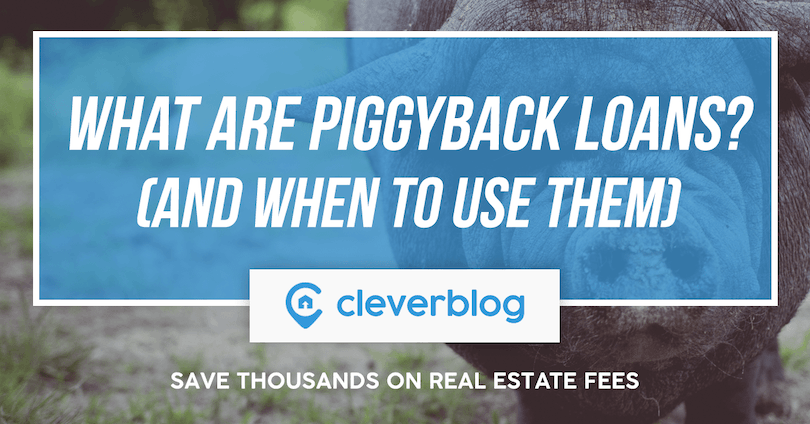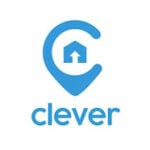
People will do anything to save money, especially when purchasing a house. When it gets to closing time and you start crunching your monthly payment, your private mortgage insurance may seem like just the thing to toss overboard. Once it’s gone, you’ll be able to loosen your belt a little and still have the house of your dreams, right? Well, you’ll still have your house, but the alternative to private mortgage insurance (PMI) may not be the dream you’ve been hoping for.
80 10 10 Loan
No, that’s not your high school locker combination. That’s the breakdown of most piggyback loans. The 80 refers to the 80% of the home sale price that your lender puts up as your first mortgage. The first 10 refers to your second mortgage’s piece of the pie, which is 10% of the home purchase amount. The second 10 refers to the 10% that you put down on the sale of your house.
For example, let’s say you want to buy a house that is $300,000. You really like this house and it’s perfect, except you don’t have $60,000 to put down on the house. So, you call up your lender and they agree to give you a piggyback mortgage. They will put down 80%, or $240,000, at a locked interest rate, and then issue you a loan for 10%, or $30,000, with a flexible interest rate. Then, you have to come up with the final 10%, or $30,000.
80 10 10 Loan Advantages
There are several advantages to using a piggyback mortgage. Most of these advantages are short-term, but they really serve their purpose for those who need the financial help initially. Let’s take a look at some more of these advantages.
Less of A Down Payment
Piggyback loans are one way to pay less of a down payment on a house while getting out of mortgage insurance. If the homeowner is using a conventional loan, they have to put down at least 20% of the home sale price in order to avoid private mortgage insurance.
Private mortgage insurance protects the lender from the negative side effects if the homeowner defaults on their loan. Because 10% isn’t much skin in the game, lenders need a bit more incentive to take the risk of lending to a buyer who doesn’t pay more than that. Private mortgage insurance can cost anywhere between .5% and 1% of the loan amount in its entirety.
Lower Monthly Payment
The payment for a piggyback mortgage can be much smaller than having a PMI payment each month, often hundreds of dollars cheaper! Although you will have two separate payments for each loan, they usually add up to a more manageable amount when compared to a payment that includes monthly PMI payments.
You Can Afford More
Due to the low down and monthly payments, you may be able to afford more of a property. This is especially helpful with jumbo loans, or loans for more than the property is valued at. In a seller's market, jumbo loans are often a crucial part of the puzzle if you want to get the home you’ve been eyeing.
It also works well for investment purposes. If you anticipate making your money back and more within a few years, a piggyback loan can help fund the initial bulk of the investment and help open doors for more money in the future.
80 10 10 Loan Disadvantages
As with many great things, there are a few glaring drawbacks to piggyback loans.
The Truth About The Low Payments
The low payment is one of the main reasons buyers choose piggyback loans. The reason behind the low monthly payments usually is cause for stress in most buyers, though. With their first mortgage, the interest and the principle both get paid monthly. It is usually more of the interest being paid at the beginning of the loan, but as the principle drops, so does the interest rate until they eventually even out, and then drop off altogether.
The second mortgage is interest only. This means you only pay the interest on the loan for most of the loan period (the length of your first loan), but the total amount of the loan is due. Using the example we worked through above, that would mean that you only pay interest for most of a 30-year loan and then owe $30,000 in a balloon payment at the end. You can choose to pay toward the premium each month, but it requires discipline to do so.
Closing Costs
With a piggyback loan, you pay two sets of closing costs: your first mortgage, and your second mortgage. That means you are actually paying more than 10% when you go to close on your house. Although some lenders will wrap that amount up into the loan amount, it is still more money to consider when you go to pay back your loan.
No Tax Benefits
With most investment properties as well as your own home loan, you can write off the interest from your loan. This isn’t the case with piggyback loans. While you can write off the interest from your first mortgage, your second mortgage receives no special treatment starting in 2018.
When To Use Piggyback Loans
As discussed previously, there may be sometimes when using a piggyback loan works to your advantage.
Investing
Using a piggyback loan to get an investment property just might be the boost you need to start off your investing company. If you put money toward both premiums each month-- or better yet, pay the second one off altogether-- you’ll be much better off than if you had used a private mortgage insurance.
- How to Start Investing in Real Estate
- Best Real Estate Investments, How to Find the Right Property
- Top 5 Reasons to Invest in Real Estate
Jumbo Loans
In a seller's market, homes often go for more than they are valued at. In order to acquire those houses, you either have to have a large portion of cash set aside, have a private lender, or use a piggyback loan. Before the crash of 2007, lenders were allowing people to take out jumbo loans to finance their houses. They were doing this with an 80-20 loan, where one mortgage would cover 80% and the other mortgage would cover the remaining 20%. After the crash, precautions were created and most homeowners now have to put down at least 10%.
The Bottom Line
Piggyback loans aren’t for everyone, but they may be right for you. The best thing you can do is weigh your options and crunch your numbers before you close on the property.
Looking for a real estate agent to help you finally get that house? You need a Clever agent. Clever uses the best agents in your area to get you the home of your dreams at a lovely flat-rate price. Call us today at 1-833-2-CLEVER or fill out our online form to get started.
